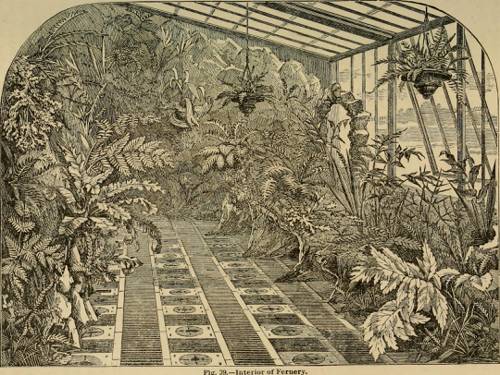
FAQ About Innovative Indoor Plant Watering Systems

What are innovative indoor plant watering systems?
Innovative indoor plant watering systems incorporate advanced technology and methodologies to efficiently deliver water to indoor plants. These systems are designed to conserve water, reduce maintenance, and optimize plant health. They can range from smart irrigation systems integrating sensors and timers to passive systems like self-watering pots and capillary mats.

How do smart irrigation systems for indoor plants work?
Smart irrigation systems for indoor plants use technology such as sensors to measure soil moisture levels, weather data, and plant water needs. They often connect to smartphone apps or home automation systems, allowing users to monitor and control watering schedules remotely. These systems help ensure that plants are watered only when necessary, preventing overwatering or underwatering.

What are the benefits of using self-watering pots for indoor plants?
Self-watering pots are designed to provide a consistent water supply to plants over an extended period. They typically feature a reservoir at the bottom, from which plants draw water as needed using capillary action. Benefits include reduced frequency of watering, minimized risk of overwatering, and more consistent moisture levels in the soil, which can lead to healthier plant growth.

Can capillary mats be used for all types of indoor plants?
Capillary mats can be an effective watering solution for many types of indoor plants, particularly those that prefer consistent moisture. However, they may not be suitable for plants that require dry conditions between waterings, such as succulents and cacti, as they provide constant moisture. It's important to match the watering system to the specific water needs of the plants.

What role do soil moisture sensors play in indoor plant watering systems?
Soil moisture sensors are a key component of many innovative indoor watering systems. They measure the moisture content in the soil and provide data to automated systems or alert users when watering is needed. This helps prevent overwatering or underwatering, ensuring plants maintain optimal moisture levels for growth. These sensors can be used in conjunction with smart irrigation systems to automate the watering process.

Are there eco-friendly indoor plant watering systems available?
Yes, there are many eco-friendly indoor plant watering systems designed to conserve water and reduce environmental impact. These include systems that recycle water, use renewable energy sources, or incorporate biodegradable materials. The goal of these systems is to minimize water waste and use sustainable practices to support plant health.

How do automatic drip irrigation systems work for indoor plants?
Automatic drip irrigation systems for indoor plants involve a network of tubing and emitters that deliver water directly to each plant's root zone. These systems can be set to deliver specific amounts of water at regular intervals, or they can be controlled by sensors that adjust watering based on moisture levels. This direct approach minimizes water waste and ensures that each plant receives adequate hydration without overwatering.

What are the maintenance requirements for innovative indoor watering systems?
Maintenance requirements for innovative indoor watering systems vary depending on the system's complexity. Common tasks include checking connections and tubing in drip systems, ensuring reservoirs in self-watering pots are filled, calibrating sensors and controllers, and periodically cleaning components to prevent blockages or algae growth. Regular maintenance ensures that the system operates efficiently and continues to benefit the plants.

Can I integrate indoor plant watering systems with smart home devices?
Many innovative indoor plant watering systems can be integrated with smart home devices. This allows users to control watering schedules and monitor plant health through voice commands or smartphone applications. Systems compatible with platforms like Amazon Alexa, Google Home, or Apple HomeKit offer enhanced convenience and automation, allowing for seamless management of indoor plant care.

How does a wicking system work in indoor plant watering?
A wicking system involves placing a wick, often made of a porous material, between a water reservoir and the plant's soil. The wick draws water up through capillary action, providing the roots with consistent moisture as needed. This simple yet effective system reduces the need for frequent watering and is suitable for various types of indoor plants, promoting steady growth.

Are there any energy-efficient watering systems for indoor plants?
Yes, there are energy-efficient watering systems for indoor plants designed to minimize electricity use while optimizing water delivery. Options include gravity-fed drip systems, solar-powered pumps, and manual systems like wicking and capillary mats that require no electrical input. These solutions aim to conserve resources while maintaining plant health.

What advancements in technology support innovative indoor plant watering?
Recent technological advancements that support innovative indoor plant watering include smart sensors, IoT connectivity, mobile app integration, and AI-driven systems. These technologies allow for precise monitoring and control of water delivery, tailored to the specific needs of each plant type. Innovations continue to focus on efficiency, user convenience, and plant health optimization.

How do hydroponic systems fit into indoor plant watering innovations?
Hydroponic systems are a significant part of indoor plant watering innovations, as they eliminate the need for soil, delivering nutrient-enriched water directly to plant roots. These systems allow for precise control over water and nutrient delivery, leading to faster growth and higher yields. Hydroponics can be integrated into automated setups that monitor plant health and adjust parameters for optimal growth conditions.

What are the considerations when choosing an indoor plant watering system?
When choosing an indoor plant watering system, consider factors such as the types of plants, the size of the indoor space, the budget, and the level of automation desired. It's also important to assess the system's compatibility with existing tech, the ease of installation and maintenance, and any eco-friendly features. Tailoring the system to meet these needs will ensure the best results for plant health and water conservation.

How does a fogging or misting system benefit indoor plants?
Fogging or misting systems benefit indoor plants by creating a humid environment that can be advantageous for plants requiring high humidity. These systems distribute fine water droplets into the air, which the plants then absorb through their leaves, mimicking natural rainforest conditions. They are particularly useful for tropical plants and can help reduce the watering frequency needed by delivering moisture efficiently.

Are indoor plant watering systems suitable for all climates?
Most indoor plant watering systems can be adapted for use in different climates, but effectiveness may vary based on environmental conditions. Systems like smart irrigation and self-watering pots can be beneficial in dry climates where water conservation is critical. In more humid environments, it's important to monitor systems closely to prevent overwatering. Always choose a system that suits both the climate and plant types for best results.

Can recycled or greywater be used in innovative indoor plant watering systems?
Yes, some innovative indoor plant watering systems are designed to use recycled or greywater. These systems often include filtration stages to ensure that the water is safe for plants. Using recycled water can significantly reduce the demand for fresh water, promoting sustainable practices in indoor gardening. However, it is important to ensure that the water is free of harmful chemicals or pathogens before use.

What impact does using innovative watering systems have on plant health?
Innovative watering systems can have a positive impact on plant health by providing more consistent moisture levels, preventing over- or underwatering, and ensuring plants receive the right amount of water at the right time. These systems can lead to healthier plants with improved growth and resilience to environmental stress. With precise water management, plants are less likely to suffer from root diseases and other issues related to improper watering.

What is the cost range for installing an innovative indoor plant watering system?
The cost of installing an innovative indoor plant watering system varies widely based on the system complexity and features. Basic self-watering pots and wicking systems might cost between $10 and $50, while advanced smart irrigation systems or hydroponic setups could range from $100 to over $500. Additionally, there may be ongoing costs for maintenance, parts replacement, and potential app subscriptions for smart systems.

Are there DIY options for creating innovative indoor plant watering systems?
Yes, there are several DIY options for creating innovative indoor plant watering systems. Enthusiasts can create self-watering pots using recycled materials, set up simple drip irrigation systems, or construct wicking systems with household items. DIY solutions can be cost-effective and tailored to individual needs, but it's important to ensure proper design and materials to avoid any potential damage to plants.
